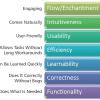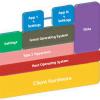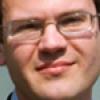Strategic advice to leverage new technologies
Technology is at the heart of nearly every enterprise, enabling new business models and strategies, and serving as the catalyst to industry convergence. Leveraging the right technology can improve business outcomes, providing intelligence and insights that help you make more informed and accurate decisions. From finding patterns in data through data science, to curating relevant insights with data analytics, to the predictive abilities and innumerable applications of AI, to solving challenging business problems with ML, NLP, and knowledge graphs, technology has brought decision-making to a more intelligent level. Keep pace with the technology trends, opportunities, applications, and real-world use cases that will move your organization closer to its transformation and business goals.
Recently Published
The "consumerization of IT" is a name we've given to a new phenomenon. A couple of new edge devices have come on the scene -- smartphones and tablets -- and they are quickly moving from being consumer gadgets to widespread elements in enterprise IT. Employees are bringing them to work and insisting that IT support them, and IT departments have gone from ignoring the devices to trying to regulate them to accepting that they will have to support users who bring their own devices (BYOD).
Consumerization is the trend for new technologies to first emerge in the consumer space and subsequently make their way into the enterprise world. But what exactly is it in the consumer world that is making users demand similar things from enterprise IT? In this article, I will focus on what the consumerization of IT means for enterprise business applications and explore the underlying user motivation for this trend. Before we jump into that, though, I'll provide a little background on what's driving this change.
James Cooper and Charles Bess reinforce a theme raised by all the authors in this issue in their article "BYOD Is Not Really About Devices." Despite the growth curves, despite the sheer numbers, IT departments are missing the boat if they focus on managing devices. Instead, Cooper and Bess assert that the real focus should shift to managing information and "personas."
Goldilocks Governance
Open source software (as I am sure you know) is software that can be freely copied, modified, and redistributed, either in its original or derived form, for sale or for free. There are many variations in open source licenses defining the conditions for these activities, but those are the core issues.
Agile Values
When adopting agile, many teams focus on specific agile techniques and methods and lose track of the values that motivate agile software development. These values are described in the Agile Manifesto:











